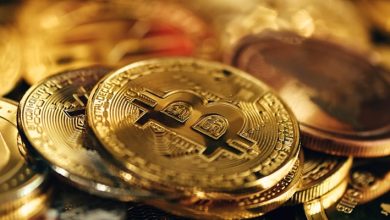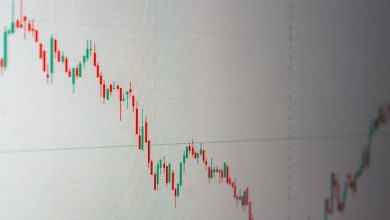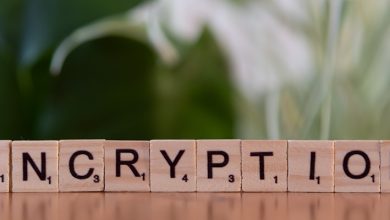The Role of NFTs in a Modern Crypto Investment Strategy

- Understanding the fundamentals of NFTs
- Exploring the potential for NFTs in investment portfolios
- Diversifying crypto investments with NFTs
- Analyzing the risks and rewards of NFT investments
- The intersection of art and finance in the NFT market
- Strategies for incorporating NFTs into a balanced investment portfolio
Understanding the fundamentals of NFTs
NFTs, or non-fungible tokens, have gained significant popularity in recent years due to their unique characteristics in the world of cryptocurrency investments. Understanding the fundamentals of NFTs is crucial for investors looking to diversify their portfolios and capitalize on this growing market.
Unlike cryptocurrencies such as Bitcoin and Ethereum, which are fungible and can be exchanged on a one-to-one basis, NFTs are indivisible and unique digital assets. Each NFT is one-of-a-kind and cannot be replicated or exchanged for another token of equal value.
One key aspect of NFTs is their use of blockchain technology to establish ownership and provenance. This ensures that each token is authentic and cannot be duplicated, providing a level of security and trust for both buyers and sellers in the marketplace.
Investors can purchase NFTs representing various digital assets, such as artwork, music, collectibles, and even virtual real estate. The value of an NFT is determined by factors such as scarcity, demand, and the reputation of the creator, making it a unique investment opportunity in the crypto space.
As with any investment, it is essential for investors to conduct thorough research and due diligence before diving into the world of NFTs. By understanding the fundamentals of NFTs and staying informed about market trends, investors can make informed decisions and potentially benefit from this emerging asset class.
Exploring the potential for NFTs in investment portfolios
Exploring the potential for Non-Fungible Tokens (NFTs) in investment portfolios can provide investors with a unique opportunity to diversify their crypto holdings. NFTs are digital assets that represent ownership of a unique item or piece of content, such as art, music, collectibles, and more. These tokens are stored on the blockchain, making them secure and immutable.
Integrating NFTs into an investment portfolio can offer a way to hedge against market volatility and traditional asset classes. By including NFTs, investors can access a new asset class that has the potential for high returns. Additionally, NFTs can provide exposure to the growing digital economy and offer a way to support artists and creators directly.
When considering NFTs for investment portfolios, it is essential to conduct thorough research and due diligence. Understanding the underlying value of the NFT, the market demand for the asset, and the long-term potential can help investors make informed decisions. Additionally, diversifying across different types of NFTs and platforms can reduce risk and maximize potential returns.
Diversifying crypto investments with NFTs
Expanding your crypto portfolio to include non-fungible tokens (NFTs) can be a smart way to diversify your investments. NFTs are unique digital assets that represent ownership of a specific item or piece of content, such as artwork, music, or collectibles. By adding NFTs to your investment strategy, you can reduce risk and potentially increase your returns.
Investing in NFTs allows you to tap into a different market than traditional cryptocurrencies. NFTs have gained popularity in recent years, attracting a new wave of investors looking to capitalize on the growing interest in digital assets. By including NFTs in your portfolio, you can take advantage of this trend and potentially see higher returns compared to traditional investments.
Furthermore, diversifying your crypto investments with NFTs can also provide you with a hedge against market volatility. While cryptocurrencies are known for their price fluctuations, NFTs can offer a more stable investment option. By holding a mix of cryptocurrencies and NFTs, you can better weather market ups and downs and protect your overall investment portfolio.
Analyzing the risks and rewards of NFT investments
When considering the risks and rewards of investing in NFTs, it is important to understand the volatile nature of the market. NFTs have the potential to offer high returns on investment, but they also come with significant risks. One of the main risks associated with NFT investments is the lack of regulation in the industry. This can make it difficult to assess the true value of an NFT and can lead to price manipulation.
Another risk to consider is the potential for theft or fraud in the NFT space. Because NFTs are digital assets, they are vulnerable to hacking and other forms of cybercrime. Investors should take precautions to secure their NFTs and be wary of scams in the market.
On the other hand, the rewards of investing in NFTs can be substantial. NFTs have the potential to revolutionize the way we buy and sell digital assets, and they offer a unique opportunity for artists and creators to monetize their work. By investing in NFTs, investors can support their favorite artists and potentially profit from the increasing value of their digital collectibles.
Ultimately, the decision to invest in NFTs should be made carefully, weighing the risks and rewards of the market. By staying informed about the latest trends and developments in the NFT space, investors can make more informed decisions about where to allocate their funds.
The intersection of art and finance in the NFT market
Art and finance converge in the NFT market, creating a unique intersection where digital assets are bought and sold as investments. NFTs, or non-fungible tokens, represent ownership of a specific piece of digital art or collectible. This new form of investment has gained popularity due to its ability to provide a tangible asset in the digital realm.
Investors are increasingly recognizing the value of NFTs as a way to diversify their portfolios and potentially generate significant returns. The art world has traditionally been seen as a separate entity from finance, but NFTs have blurred the lines between the two industries. By leveraging blockchain technology, NFTs offer a transparent and secure way to buy, sell, and trade digital assets.
The NFT market has attracted a wide range of participants, from artists looking to monetize their work to investors seeking alternative investment opportunities. This convergence of art and finance has sparked a new wave of creativity and innovation in the digital space. As the NFT market continues to evolve, it is essential for investors to stay informed and educated about this emerging asset class.
Strategies for incorporating NFTs into a balanced investment portfolio
When considering the integration of Non-Fungible Tokens (NFTs) into an investment portfolio, it is essential to approach it with a balanced strategy. NFTs have gained significant traction in the crypto space, offering unique opportunities for diversification and potential high returns.
One effective strategy for incorporating NFTs into a balanced investment portfolio is to allocate a small percentage of your overall investment capital to NFTs. By diversifying your portfolio in this way, you can minimize risk while still taking advantage of the potential upside that NFTs offer.
Another approach is to research and invest in NFTs that align with your interests and expertise. By focusing on NFTs that you understand and are passionate about, you can make more informed investment decisions and potentially increase your chances of success in the NFT market.
Additionally, it is crucial to stay informed about the latest trends and developments in the NFT space. By keeping up-to-date with news and market analysis, you can identify emerging opportunities and make strategic investment decisions that align with your overall investment goals.
In conclusion, incorporating NFTs into a balanced investment portfolio can be a rewarding strategy for investors looking to diversify and potentially capitalize on the unique opportunities offered by NFTs. By allocating a small percentage of your capital to NFTs, focusing on NFTs that align with your interests, and staying informed about market trends, you can create a well-rounded investment portfolio that includes this exciting and potentially lucrative asset class.






